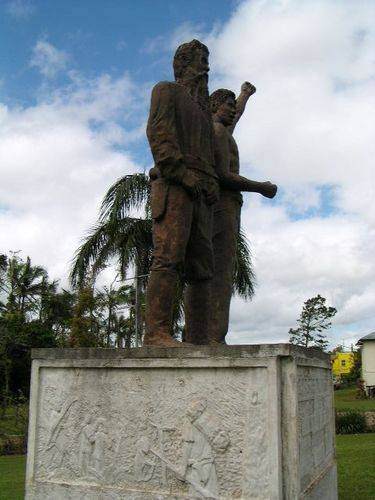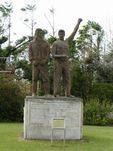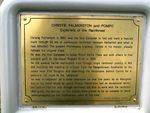
Christie Palmerston & PompoPrint Page 
A statue commemorates explorer Christie Palmerston and his Aboriginal guide, Pompo.
In 1882, a prospector-bushman Christie Palmerston with Pompo and four other Aboriginals walked 100 kilometres from Mourilyan Harbour, Innisfail (then Geraldton) to the mining town of Herberton in 12 days. Pompo accompanied Palmerston for most of his exploration. When Pompo died at Herberton in 1882, Palmerston was deeply grieved, and had a tombstone erected on his grave.
Location
| Address: | Main Street, Lions Park, Millaa Millaa, 4886 |
|---|---|
| State: | QLD |
| Area: | AUS |
| GPS Coordinates: | Lat: -17.511389 Long: 145.614025 Note: GPS Coordinates are approximate. |
Details
| Monument Type: | Sculpture |
|---|---|
| Monument Theme: | People |
| Sub-Theme: | Exploration |
Dedication
Christie Palmerston & Pompo
Explorers of the Rainforest
Christie Palmerston in 1882 was the first European to find and mark a feasible track through 90km of continuous rainforest between Herberton and what is now Innisfail. The present Palmerston Highway named in his honour, closely follows his original track. He was the first European to scale Mount Bartle Frere and with others to find payable gold on the Upper Russell River in 1886. He did several earlier exploratory trips through virgin rainforest country in Nth Qld including marking of a track from the Hodginkinson Goldfields to the coast near Port Douglas and searching the mountains behind Cairns for a possible rail route to the Tableland.
He was accompanied as a close companion for over five years by an Aboriginal boy in his teens whom he called Pompo. Palmerston had an exceptional ability not only to find his way through rainforest but also to work with the rainforest Aborigines. His writings on this subject have proved to be as valuable to future anthropologists as his explorations were at the time.
Eacham Historical Society.
































